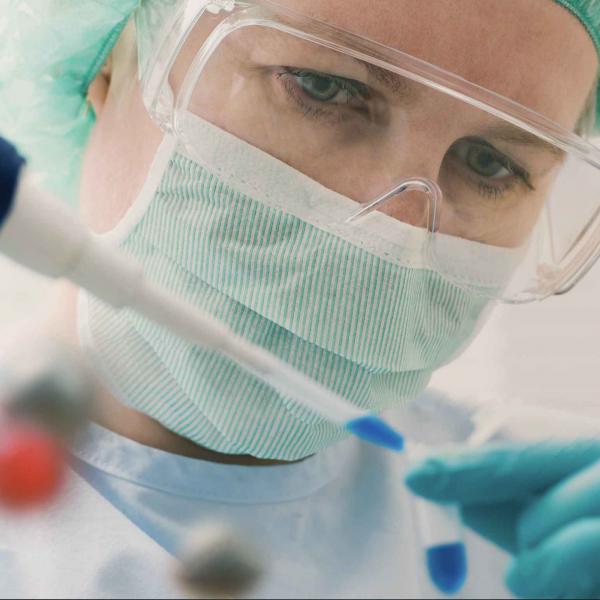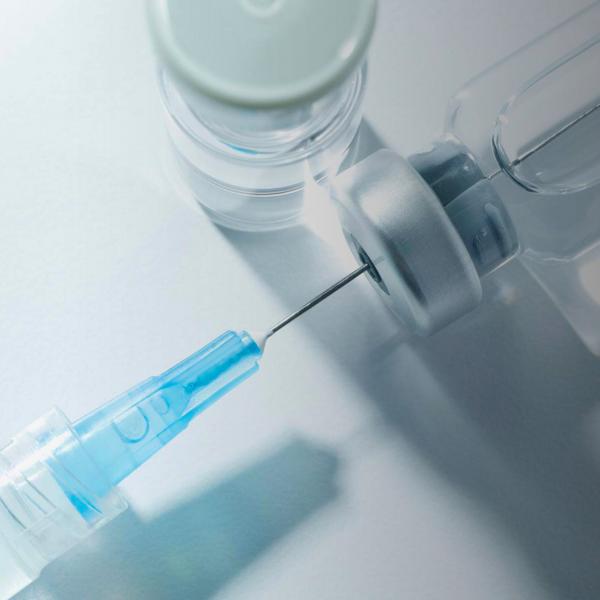CAS: 1405-69-2 | EC No.: 215-783-6
A highly basic glycoprotein tetramer, each AVIDIN protein assembles four identical subunits composed of 128 amino acids. Each subunit binds to Biotin (Vitamin H, Co-enzyme R, Vitamin B7) with extreme affinity, 10,000 to 10,000,000 times the strength at which an antibody binds to its antigen 1.
This biotin-binding by AVIDIN is strong, specific, rapid, and resilient, withstanding proteolytic enzymes and extremes of temperature and pH. These properties, one of the most potent natural non-covalent bonds identified, have made the AVIDIN-biotin system extensively employed across the biotech industry.
AVIDIN’s discovery came from the observation of ‘egg-white injury’ in animals fed a diet rich in raw egg whites. Symptoms resembling Biotin deficiency, despite the dietary sufficiency, led to the identification of AVIDIN as the component rendering Biotin unavailable. For the egg, the source of AVIDIN, this function is a crucial line of defense in its nutritional immunity, similar to the iron-sequestering role of OVOTRANSFERRIN.
Most organisms other than plants and a few micro-organisms cannot synthesize Biotin for themselves, so they rely heavily on these sources for their continued supply. This relative rarity in nature makes it precious, as Biotin is a crucial co-factor of enzymes critical for central cellular metabolic processes. By making the egg-white a ‘biotin-free zone,’ AVIDIN starves invading organisms of this co-factor, binding all free Biotin to render them incapable of proliferating. This capability is potent despite AVIDIN comprising a mere 0.05% of the total protein of the egg-white (a trace 1.8g per egg).
Applications:
The strength with which AVIDIN binds to Biotin has been leveraged across biotechnology, nanotechnology, and biomedical fields, where it is used in medical device development, pharmaceuticals, research, and diagnostics. The 1:4 binding ratio makes this bond amenable to amplifying weak signals, improving signal-to-noise ratios, and detecting otherwise indiscernible biological phenomena. Biotin is relatively straightforward to attach to binders and probes in biotinylation, making the AVIDIN-biotin system highly versatile for many applications.
Biotinylated fluorescent probes, ligands, and other imaging agents are readily available and routinely generated in-house by chemical or enzymatic means2. This makes the AVIDIN-biotin system the go-to technology for affinity purification, immunoassays, diagnostics, and non-radioactive labeling. The AVIDIN-biotin system has been effectively applied in nanotechnology to deliver nucleic acids, proteins, peptides, and monoclonal antibodies (MAbs) 3. The strength and specificity of the bond overcome the aggregation, short-systemic half-life, and low cellular uptake challenges faced when delivering siRNAs and peptides.
Beyond this, AVIDIN promotes cellular internalization and improves target specificity, making it an effective delivery carrier.
Another property of AVIDIN and biotin is their accumulation and targeting of cancerous cells. These tend to express biotin to a higher level on their surface than surrounding tissues, making the AVIDIN-biotin system tuneable for pretargeting and other anticancer therapeutics 4. This has been utilized particularly effectively in radioimmunoguided surgeries using radiolabelled MAbs5.
Given its workhorse reliability, versatility, sensitivity, and ease of application, the AVIDIN-biotin system has many potential and existing use cases. These are too extensive for us to outline here fully, so we direct readers wishing to know more to excellent reviews by Jain A & Cheng K. 2 and Sakahara H & Saga T6.
Use-cases:
- Molecular signal amplification to improve bioassay sensitivity
- Flow cytometry, blotting, microarrays, ELISAs
- Delivery of nucleic acids, peptides, proteins, and MAbs
- Increasing cellular uptake of attached moieties
- Genetic probe for gene mapping
- A secondary histochemical detection reagent
- Detection of fluorescent biocytins in neuroanatomical tracing
- Unlabelled detection of mast cells in human tissues
- Capture/release of biotinylated targets
Benefits of Bioseutica®’s AVIDIN:
Bioseutica® produces ultra-high purity AVIDIN, making it particularly attractive for maximizing the efficacy of probes and derivatives, which rely on minimizing background. We provide full services and technical and application support to help our customers meet their unique product requirements. Our Quality Control Systems ensure reliable performance and quality. Customers are encouraged to request and review our analytical results before shipment for pre-approval as required.
Contact us today to learn more about our first choice, AVIDIN.
Non-Warranty: The information contained herein is provided in good faith and is true and correct to our knowledge. However, no warranty or guarantee is implied or inferred, and the information may be subject to change without further notice. Bioseutica®’s products are sold with the understanding that the purchaser will conduct tests to determine the suitability of these products for their particular use.
Regulatory:
Regulations may vary by country. Always check the local legislation regarding the usage and claims of this product.
References:
- 1. Diamandis EP & Christopoulos TK.: The biotin(strept)avidin system: principles and applications in biotechnology, Clinical Chemistry 1991 | Publisher Site
- 2. Jain A & Cheng K.: The principles and applications of avidin-based nanoparticles in drug delivery and diagnosis, J Controlled Release 2016 | Publisher Site
- 3. Pardridge WM.: Blood-brain barrier drug delivery of IgG fusion proteins with a transferrin receptor monoclonal antibody, Expert Opinion on Drug Delivery 2015 | Publisher Site
- 4. Lesch H et al.: Avidin-biotin technology in targeted therapy. Expert Opin. Drug Deliv. 2010 | Publisher Site
- 5. Stella M et al.: Avidin-Biotin System in Radioimmunoguided Surgery for Colorectal Cancer. Dis. Colon Rectum 1994 | Publisher Site
- 6. Sakahara H & Safa T.: Avidin–biotin system for delivery of diagnostic agents, Advanced Drug Delivery Reviews, 1999. | Publisher Site
- 7. Eakin R. et al.: Egg-White Injury In Chicks And Its Relationship To A Deficiency Of Vitamin H (Biotin), Science 1940 | Publisher Site
- 8. Poissonnier et al.: Observations of the ‘‘Egg White Injury’’ in Ants. PLOS one. 2014 | Publisher Site
- 9. Kunnas et al.: Induction of chicken avidin and related mRNAs after bacterial Infection, Biochimica et Biophysica Acta. 1993 | Publisher Site
- 10. Jain A & Cheng K.: The principles and applications of avidin-based nanoparticles in drug delivery and diagnosis, J Controlled Release 2016 | Publisher Site
- 11. Pignatto et al.: Optimized Avidin Nucleic Acid Nanoassemblies by a Tailored PEGylation Strategy and Their Application as Molecular Amplifiers in Detection, Bioconjugate Chem, 2010 | Publisher Site


